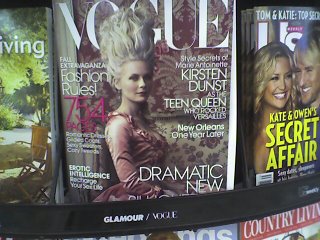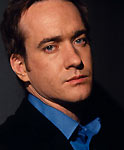Thursday, August 31, 2006
Monday, August 28, 2006
No teen queens here (see earlier post)

This from the Sept.4, 2006 Business Week magazine, page 11, "Verbatim" box (subscription required).
Apparently, Northwest Airlines sent some of its employees a memo with helpful hints on how to survive pay cuts and layoffs. Tip no. 8: Replace 100 watt bulbs with 60 watt. Tip no. 39: Shop in thrift stores. Tip no. 46 is really helpful: Don't be shy about pulling something you like out of the trash. What is this, the ownership society?
OK. I know the airlines are really hurting, given fuel and security costs, not to mention lost business from the threat of terrorism. But why then were the CEO's raking in millions a year? Where's the stewardship? Do the employees count for anything?
Way back in 2000, the Urban Institute estimated that approximately 1% of the U.S. population experience homelessness each year, 38% (October) to 39% (February) of them being children.
(Illustration courtesy streetroots.)
Sunday, August 27, 2006
A literature with a sense of place
 While in college, I read a book that ignited my passion for Latin American literature. It was Mario Vargas Llosa's "Conversation in the Cathedral." The "cathedral" of the title was actually the name of a seedy bar, situated in the bowels of Lima's tawdriest neighborhood where buses, trucks and colectivo cabs picked up low-fare passengers bound for the farthest reaches of the Andes, the altiplano or the coastal desert. The cover photo sent a vibe -- of a joint where men who would do anything for a price exchanged information and took orders, downed cold beers as a salve against the heat and the torpor of their souls, and ground out cigarettes right on the surface of the wooden tables. What a place. Reading Vargas Llosa's scenes, I thought it must be something like the student bar I hung out in on Friday nights, the El Dorado, which was lit like a Hopper painting and harbored a few unsavory types, but was always friendly because of a screaming juke box and rowdy innocents. Little did I know. On a much later trip to Lima, and to the transport hub of the fictional Cathedral, I realized my college bar was an oasis, a paragon of virtue and hygiene, in comparison to the bars I saw before me then.
While in college, I read a book that ignited my passion for Latin American literature. It was Mario Vargas Llosa's "Conversation in the Cathedral." The "cathedral" of the title was actually the name of a seedy bar, situated in the bowels of Lima's tawdriest neighborhood where buses, trucks and colectivo cabs picked up low-fare passengers bound for the farthest reaches of the Andes, the altiplano or the coastal desert. The cover photo sent a vibe -- of a joint where men who would do anything for a price exchanged information and took orders, downed cold beers as a salve against the heat and the torpor of their souls, and ground out cigarettes right on the surface of the wooden tables. What a place. Reading Vargas Llosa's scenes, I thought it must be something like the student bar I hung out in on Friday nights, the El Dorado, which was lit like a Hopper painting and harbored a few unsavory types, but was always friendly because of a screaming juke box and rowdy innocents. Little did I know. On a much later trip to Lima, and to the transport hub of the fictional Cathedral, I realized my college bar was an oasis, a paragon of virtue and hygiene, in comparison to the bars I saw before me then.
I thought about this yesterday, while taking a break from the heat at Amnesia Brewing. A couple of dewy tall glasses of ESB were positioned before me, and I thought back to the Cathedral, and to that sense of PLACE. Is there a literature that creates it for Portland? And if so, what are its characteristics?
Monday, August 21, 2006
Let them eat cake
 Perhaps it should not be any surprise that the magazine that celebrates celebrities, America's aristocracy, should place the image of Marie Antoinette on its cover. Something for its readers to aspire to?
Perhaps it should not be any surprise that the magazine that celebrates celebrities, America's aristocracy, should place the image of Marie Antoinette on its cover. Something for its readers to aspire to?Surely the magazine's editor knew what she was doing being ironically ironical. The "teen queen" persona seems to reflect the shallow, frivolous habits of today's celebrities and celebrity chasers. So the image in the mirror Vogue holds up to readers is naughty, considering what happened to France's last reigning consort.
Meanwhile, the U.S.A. 2006 and France 1789 situations just beg more comparisons .
And let's not forget Bush mere's (sorry for lack of accent mark) post-Katrina comment.
Wednesday, August 16, 2006
Let us eat cake

Well, I am feeling pretty chuffed this morning. The sages at the Wall Street Journal are giving people advice that we formulated for ourselves back in 1994 when we were trying to figure out how to live life in balance.
We were living in Italy. We watched how the people there lived and realized they were really much happier than most Americans we knew living in Washington, D.C. We broke down the elements of their lives which laid out the choices for us. We'd return to the U.S. and ditch the big house, the big yard, the multiple cars, the generally large footprint that says "I've got it" and the maintenance hassles and expenses that go along with it. We'd make a short commute to work a priority, reducing non-salaried time spent on the job, and increasing the hours in the day we would have for meals and leisure together. The money we'd save would be spent on annual travel. So we did it. Our footprint was smaller, but we lived larger.
One of the things that time allowed us was socializing. As Robert Reynolds says, paraphrasing the French, dinner is an excuse to be together. The WSJ article says a meal with friends and loved ones is the single most happiness-inducing activity we can do.
Yesterday was proof. I managed my work schedule to take the afternoon off and lunch with Robert and his students and a visiting cheesemaker. Two hours into the repast and dozens of conversational topics on food, books, travel, knitting and more, my husband and daughter joined us for dessert, student Nathan's dreamy chocolate Charlotte. Shortly after, I went back to a few hours of work.
It's called having your cake and eating it too.
Sunday, August 13, 2006
Malaysian dreams

 My first taste of Malay food was in Beijing, in April, 2006. My host, who is originally from Sweden but who moved to China in the 1980s for the food, treated me to the experience, which I was not sure I'd enjoy. But then out came countless dishes with a mix of exotic and familiar flavorings and unabashed doses of hot spices, centered on seafood and vegetables, washed down with frothily aerated masala tea and finished off with the thinnest crepes folded over warmed slices of mango or banana, and I was sold. Malay cuisine is a mix of Chinese, Indian and native, and that day in Beijing I saw variations of saag paneer, chicken curry, sag aloo and the like on the table. The entire experience made me want to visit Malaysia to browse food markets, hit a few fish dives where you eat shrimp cooked in a sweet sauce in the shell with your fingers, and cool off with tall dewy glasses of durian smoothie while taking in paradisical views of islands in the China Sea.
My first taste of Malay food was in Beijing, in April, 2006. My host, who is originally from Sweden but who moved to China in the 1980s for the food, treated me to the experience, which I was not sure I'd enjoy. But then out came countless dishes with a mix of exotic and familiar flavorings and unabashed doses of hot spices, centered on seafood and vegetables, washed down with frothily aerated masala tea and finished off with the thinnest crepes folded over warmed slices of mango or banana, and I was sold. Malay cuisine is a mix of Chinese, Indian and native, and that day in Beijing I saw variations of saag paneer, chicken curry, sag aloo and the like on the table. The entire experience made me want to visit Malaysia to browse food markets, hit a few fish dives where you eat shrimp cooked in a sweet sauce in the shell with your fingers, and cool off with tall dewy glasses of durian smoothie while taking in paradisical views of islands in the China Sea.So I was excited when the Malay Satay Hut opened here in Portland. A bit of my Chinese-Swedish-Malay experience could be relived in my increasingly cosmpolitan home town! So much of what I look for in a restaurant experience is authenticity, and a lack of pretentiousness, and the Hut seems to have much of those. I was especially happy to have the barley "tea", which is rumored to be an antidote to the stifling heat of the tropics but has other healthful properties so can be enjoyed in any climate. It is just ever so sweet, and goes nicely in balance with the heat of the chilis. We were staggered at the portion size of some the appetizers, e.g. the oyster omelette, which can easily serve as a full meal, so we'll simplify our choices in the future. The menu is extensive, and also lists several tropical shakes, including my favorite, the avocado, and -- so exciting -- the banana pancake.
Now, the Hut is not nearly as transporting as was my Beijing-Malay experience, despite the gorgeous, huge photos of islands, markets, costume and cityscape. I think this is simply a matter of choices. The Hut is part of a small chain, with restaurants in Seattle and Redmond, and perhaps for efficiency's sake they've opted not to aim high. The curry sauce is savory, but not exceptional, and the pancake, while tasty and a treat, was not as delicate a confection as I had anticipated. The Hut reminded me of the many different and predictable Indian restaurants I go to regularly just to enjoy some turmeric rice, dal, curry and nan, even if the quality is nothing like what I've had in the best restaurants in Delhi. And that is the point, I think: we can't always have the very best, and sometimes just having something good is quite enough. The Hut is affordable and a congenial place. It is great to now have Malay options on the PDX restaurant scene and we should hope for many more. And if someday we have one that surpasses the Hut in quality, we will still be returning to the Hut to eat as ordinary Malays do.
Saturday, August 12, 2006
Spooks

We've been watching a fantastic British spy series, known on BBC America as "MI-5". It's the thinking person's "24". Now, "24" is highly entertaining, but it is more of a cartoon series than serious drama. And it is darkly fascistic (torture actually works) and mythologizes a la Superman its lead character, Jack Bauer. "Spooks" however works because of much stronger narrative elements, such as character development and fine dialogue, and of course that staple of British series, fine acting. The boss here actually has a brain and not just political instinct, and as played by actor Peter Firth has some of the best lines of the show. Hugh Laurie does his usual star turn in the few episodes in which he appears. He is so good you end up hitting the rewind button to re-experience his moments and sharp retorts. Importantly, this show can handle nuance and ambiguity (Hugh Laurie's character to Matthew McFayden's: "You do ambiguity, don't you, Tom?"). Both shows are heavily influenced in tone and action by 9/11. Both have stylish art direction -- dark shiny surfaces, eerie shades of color -- and jarring sounds from contemporary trappings that act as counterpoint to plot development. The entirely believable apocalyptic Episode 5 in Series 2 is brilliant, and quite a contrast to the "24" nuke season which was so preposterous. Here's something else I love about this series: the actors have faces. There is not a sign of cosmetic surgery anywhere.

Tuesday, August 08, 2006
Saturday, August 05, 2006
Ken's pizza

One of the things we most missed after returning with family from three years in Verona, Italy back in 1994, was our regular Friday night at the Pizzeria Ca' Trentina. About week two after arriving in Portland, in a daze of folly brought on by desperation, we tried a popular local chain, and ordered a Margherita, a feast of simplicity and flavor when eaten at any pizzeria in Italy. It arrived slathered with melted cheese, soggy with too much tomato sauce, and almost pickled from the exaggerated quantities of garlic all over it. Being emotional when it comes to Italian food, I broke into tears.
How things have changed. Thursday night, we went to Ken's Artisan Pizza, open only a month and packing them in, and had a margherita with arugula from a wood-fired oven and it was as close to the real thing as I have encountered outside Italy. It is too much to expect an exact duplicate -- if that were possible, why look forward to a return to the Ca' Trentina? But the fact that a chef wants to honor the values of real Italian pizza enough to get this close shows how much more sophisticated Portland has become in culinary matters. Now if someone could figure out how to make real, fresh, ricotta to drop in a few spoonfuls on a basic pizza, we'd be in heaven.
Ken's is a friendly, unpretentious, efficient place. The fact that it is hugely popular doesn't mean you will have a long wait for a table. It only serves salads, a few pizza choices, and a couple of desserts, so diners tend not be long at the task. We were told we'd have a wait of about 20 minutes, and at about 22 minutes we had our table. It was a great idea, I think, to keep it a simple operation.
Ken's will probably become our "go to" place locally for pizza. There are at least two other places with wood-fired ovens, but the service is lousy there. At Nostrana's, despite very good pizza and a more extensive and quite authentic Italian menu, I had my single worst service experience at any restaurant in my life and did not receive even an attempt at an apology for it, so am reluctant to reward the arrogance with a return visit. So Ken, thanks.



